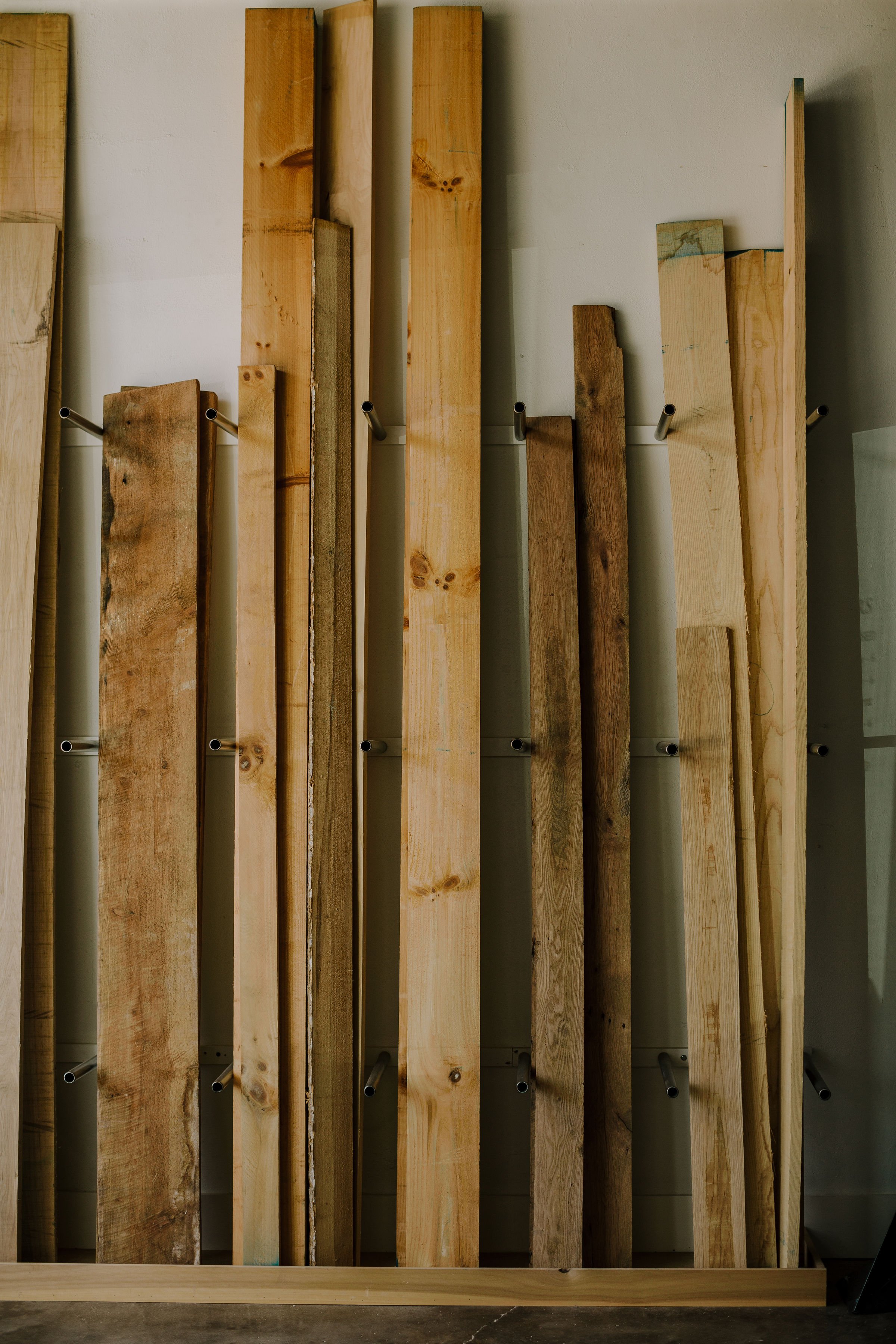

Known for austere and original designs, R McClintock blends elegance and function. Both custom and designer furniture is intended as highly functional sculpture, aiming to elevate the interior design without overwhelming.
Each piece is designed and hand crafted by Rachel McClintock, an Ozark Mountains native who studied professional woodcraft in the Appalachian Mountains of North Carolina. Her passion is tied to the preciousness of materials and the care with which they are used.

Invited Artists
-

Stephen Baird
POTTER
-

Marge Dugger
TEXTILE ARTIST
-

Riley Evans
BLADESMITH
FAQ
-
First, use your cutting board to prepare every meal. Then, after every use, gently scrub the board clean with a mild soap, rinse very quickly under warm water, and stand upright until totally dry. Do not let water pool for long and refrain from completely submerging the board during washings. Most importantly, never attempt to clean the board (or any wood product) in a dishwasher!
It’s vital for cutting board longevity to “charge” it by replenishing its oil content and preventing the wood from drying out. For daily-use boards, lather with food-grade mineral oil weekly. Apply a thick and complete layer over all surfaces and leave it to set overnight. Wipe away excess in the morning with a clean, dry cloth. If there is not excess oil in the morning, your board hasn't received enough oil and it's recommended that you continue to oil the board to excess. When fully charged, the board will not be able to absorb any more oil.
Over the following days, you might find that the mineral oil continues to bleed from your board's surface. This is not a concern. Continue wiping away excess until you’ve reached the point of equilibrium.
To avoid or correct warping, store the board on edge when not in use and avoid using your board as a trivet as it is not designed for that purpose. -
Generally, no. The only appropriate cooking oil for this use is walnut oil.
Walnut oil will not go rancid as it is a drying oil which hardens in oxygen and UV light. In the United States most walnut oils are highly refined, meaning much, if not all, of the allergen-causing proteins have been removed. However, there can be no guarantee that the oils are 100% purified. If allergic reaction is a concern, please consider an alternative such as food-grade mineral oil.
Though mineral oil remains viscous after application, it is entirely inert and prohibits bacterial growth. It can be easily accessed at many pharmaceutical or grocery stores. -
Face/Edge Grain cutting boards are inferior to End Grain cutting boards. The End Grain of wood is far more forgiving, both to the knife and to the board itself.
When a knife is run over Face/Edge Grains, the wood fibers are permanently severed; over time, these cuts will scar the board dramatically. Each cut dulls the knife a little more, as the knife is not only slicing through the food, but also the fibers of the underlying board.
When a knife is run over End Grain the wood fibers part, allowing the knife to slice between the fibers. The fibers are not severed and can therefore “heal” after each cut. Because the knife rides between the wood fibers, your knife will stay sharper longer and your End Grain cutting board will look nearly as fresh as the day you found it.
